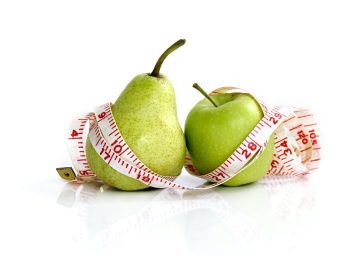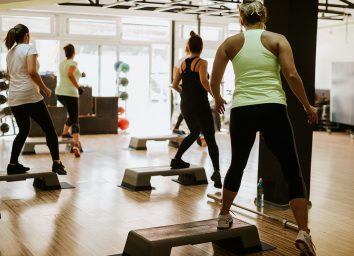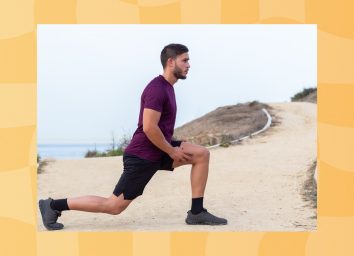Science Says This Abs Exercise Is the Single Best You Can Do

According to Harvard Medical School, achieving a stronger core—the "sturdy central link in a chain connecting your upper and lower body"—isn't something you need to do to look better naked. Working on your abs and obliques can help you become a better walker and a better athlete overall. It will improve your balance and flexibility and improve your quality of life by staving off pain well into old age. But, as anyone who has Googled "abs exercises" knows, there are hundreds of ways you can work your core, ranging from the always controversial situps to HIIT moves such as mountain climbers to countless yoga poses.
Which core move is the absolute best core move? Well, a study published in the Journal of Strength and Conditioning Research tested tons of different abs exercises and actually came away with an answer. So if you want to work your core in the most efficient manner as humanly possible, read on to learn what the move is, and how to do it. And for more great fitness advice, see here for the Secret Exercise Tricks for Keeping Your Weight Down for Good.
Isolation Versus Integration Exercises
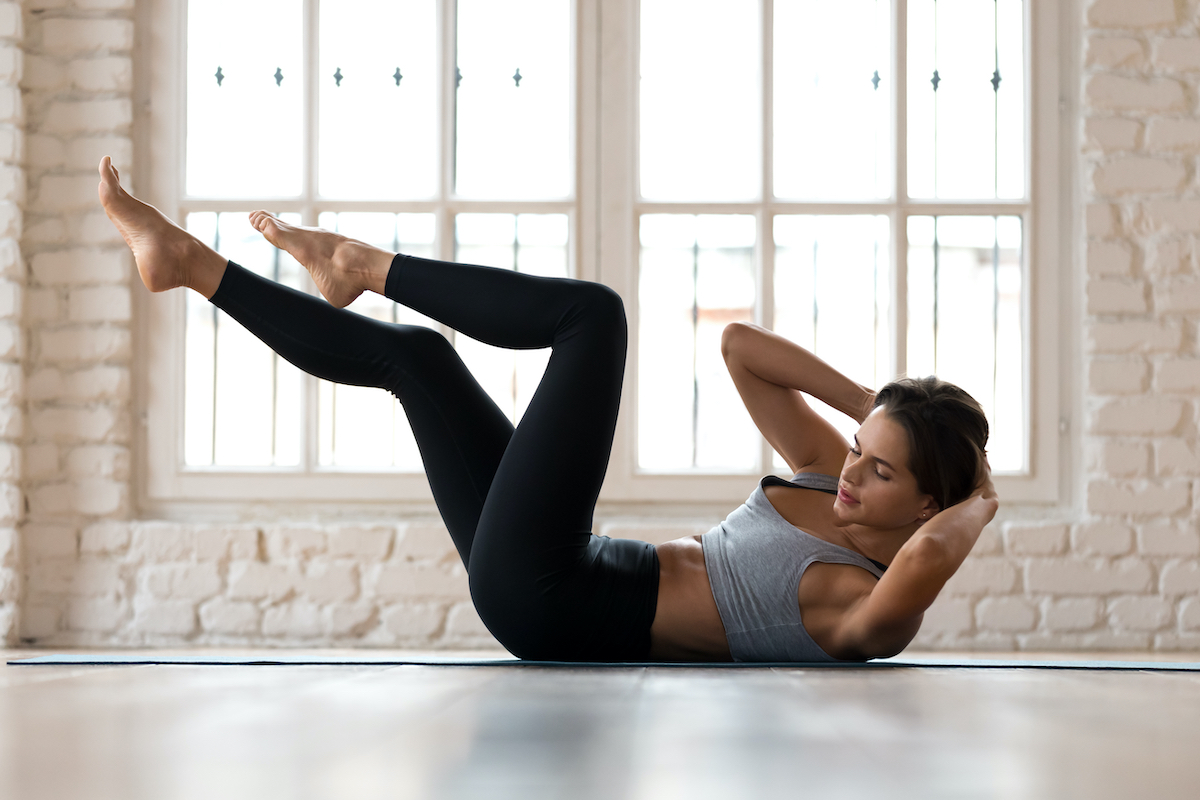
The study, conducted by researchers at Penn State University, focused on 10 men and 10 women who were hooked up with electrodes and put through 16 different core exercises to learn which of the exercises activated the most muscle and therefore "maximiz[ed] functional gains and peak performance."
The researchers quickly discovered that "isolation" exercises that are designed to target your abs specifically—such as crunches—aren't as effective at working your abdominal muscles as "integration" exercises are. Integration exercises, such as mountain climbers, are ones that work other muscle groups, as well. And for more ways to work your abs, see here for The Secret Exercise Tricks for a Stronger Core.
This Abs Exercise Is the Best
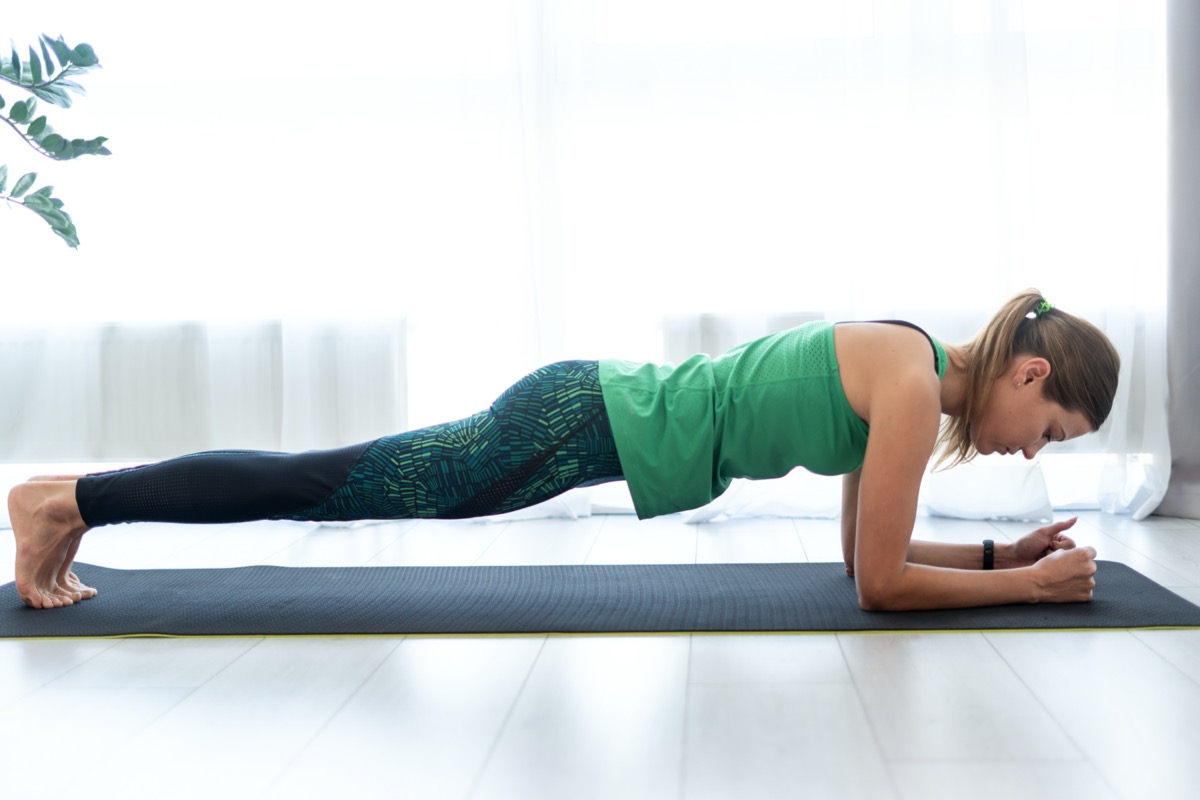
The study found that the plank was the most effective at working your core muscles the hardest. The hovering element of the plank was crucial. "Abdominal and lumbar muscle activity was greatest when balance was challenged, by adding complex movements to these traditional core exercises," notes the study.
"It makes total sense if you think about it," observe the experts over at Men's Health. "When you assume the (plank) position, it forces the muscles in your mid-section to work extra-hard in order to keep your spine stable and ensure your vertebrae don't move."
What Happens to Your Body When You Plank
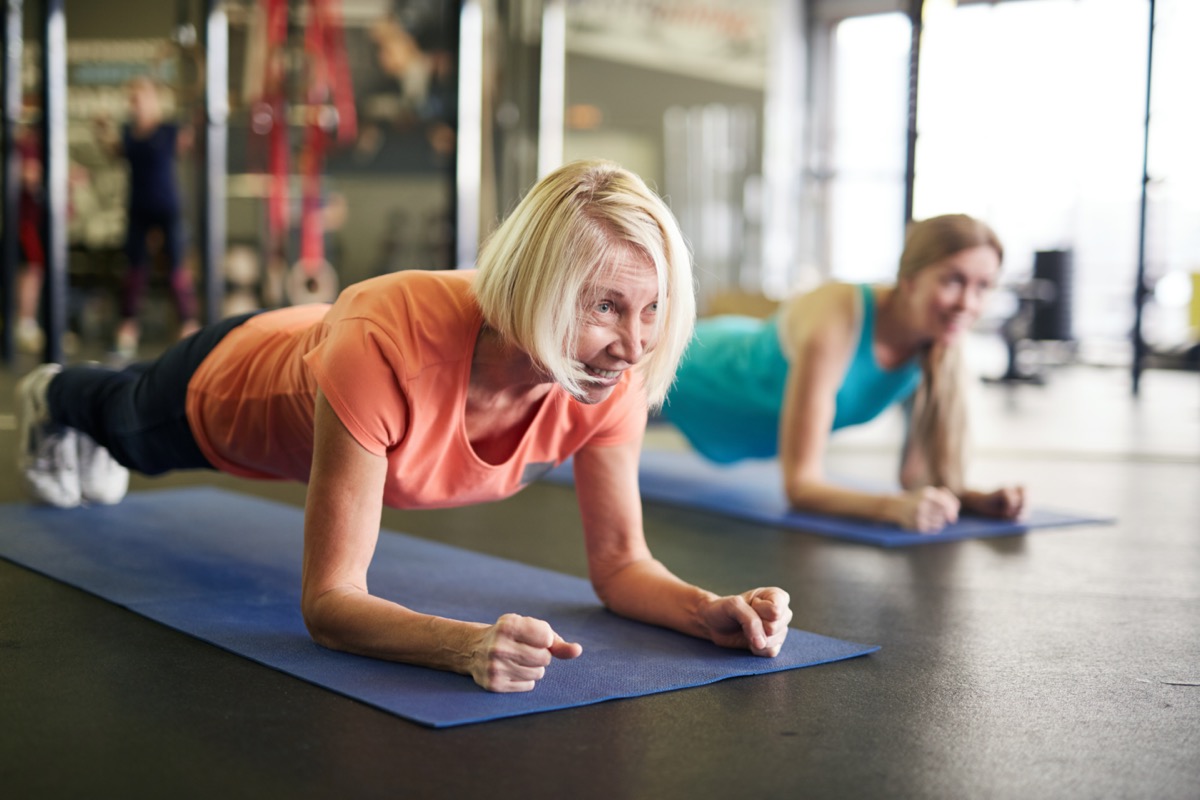
In case you're new to planking, the most common form of planking is the "low plank." To do it, you'll situate your body so that you're hovering over the ground with your weight on your elbows and your toes, like a push-up position. From there, you hover, holding your body as straight as possible, engaging your core.
When you perform the move correctly, you'll engage the whole of your core, from your abdominal muscles to your obliques. You'll also work your upper back muscles, your quads, your glutes, your calves, and your pecs. "Planks are a very versatile exercise that target a lot of the most important muscle groups in the body," advise the health experts at Health Corps.
Planks will help you build strength, improve your posture and coordination, gain flexibility, and boost your athletic performance. They also improve back pain…
Planking Is Especially Good for Back Pain
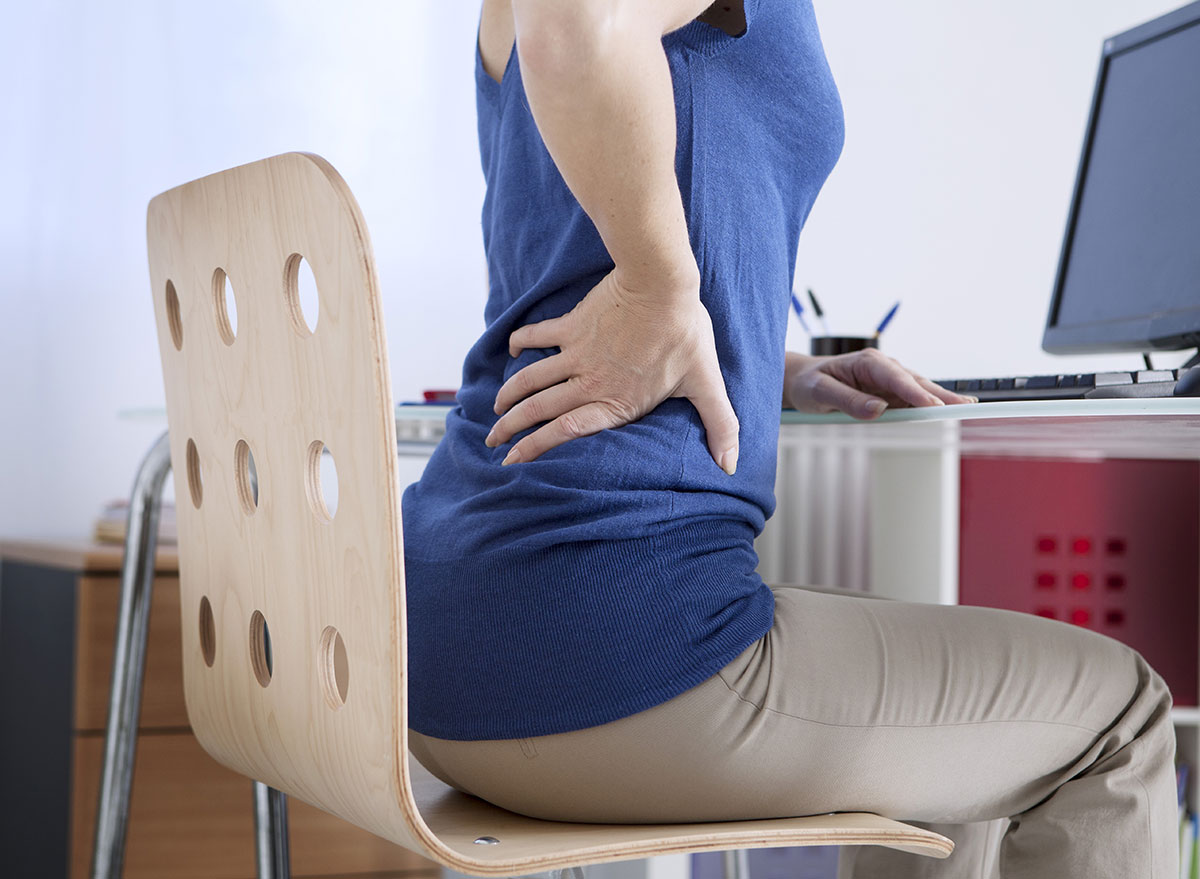
"Eighty percent of people will experience back pain during their lifetimes," says Tom Holland, MS, CSCS, CISSN, an exercise physiologist and author of The Micro-Workout Plan: Get the Body You Want without the Gym in 15 Minutes or Less a Day. To fight this pain, he advises planking.
Now, planking is especially good at targeted back pain because it doesn't actually target back pain. Rather, it strengthens the entire back. "The improved posture alone helps to align the vertebrae, which takes off unnecessary stress in the spinal region," says Health Corps. "This also helps to arrange the ligaments in the back properly, which further prevents painful back conditions."
If you suffer from back pain, know that Holland created for us a terrific, custom workout that is designed to not only relieve you of pain but also to raise your quality of life. Newsflash: The entire workout is rooted in planks. To learn how to do it, check out The 1-Minute Workout That Builds Strength and Relieves Pain, Says Top Trainer.

